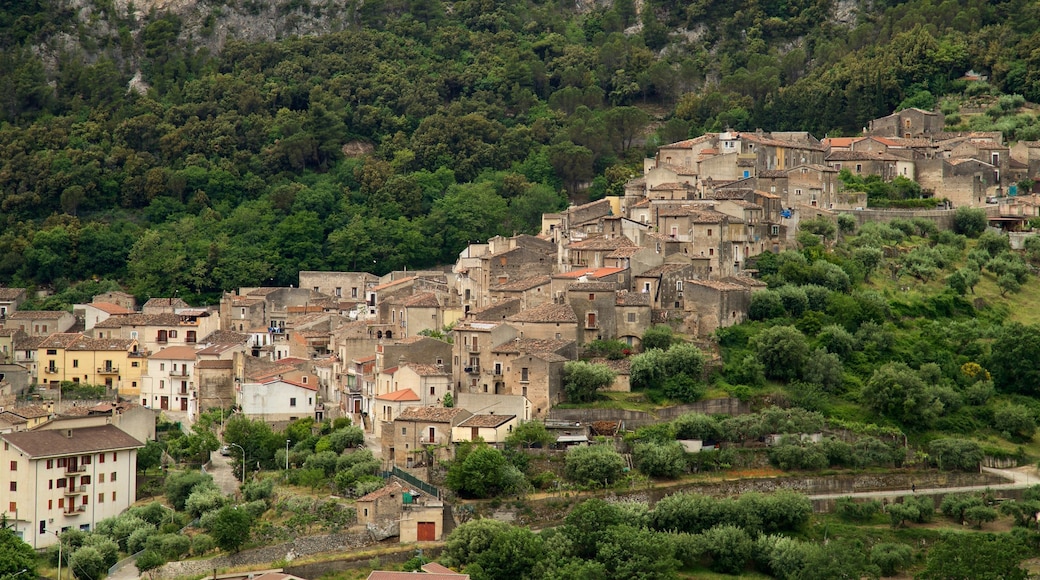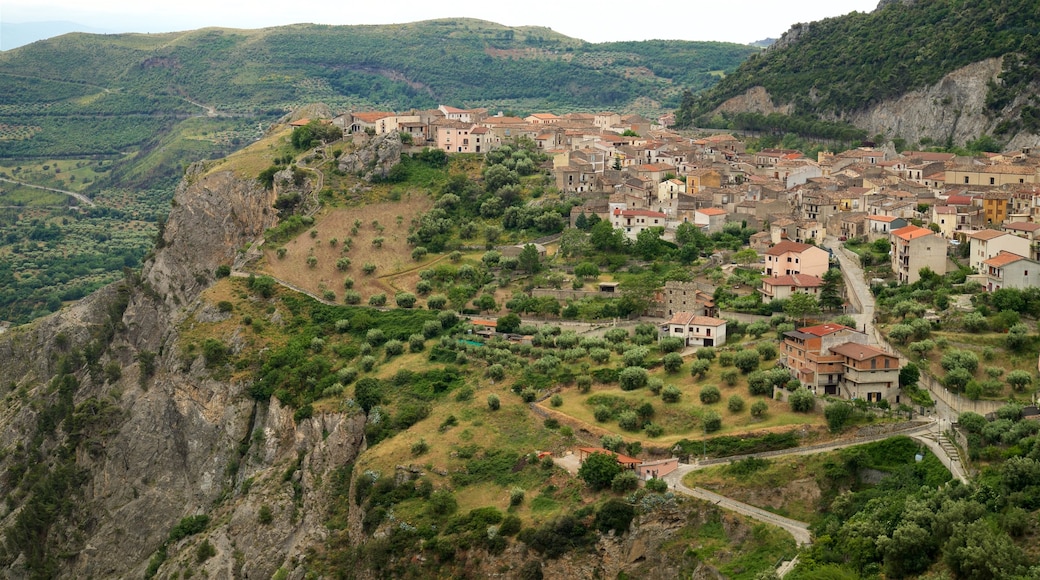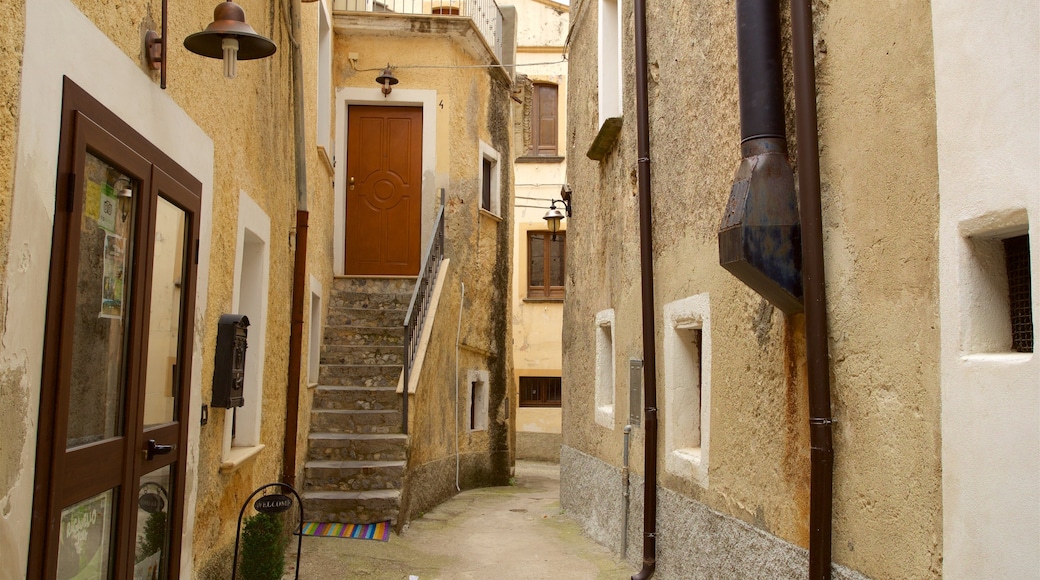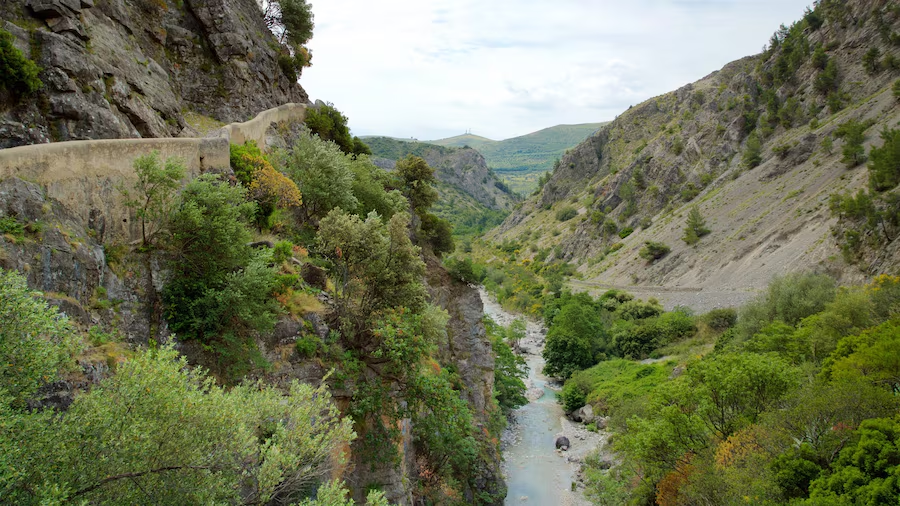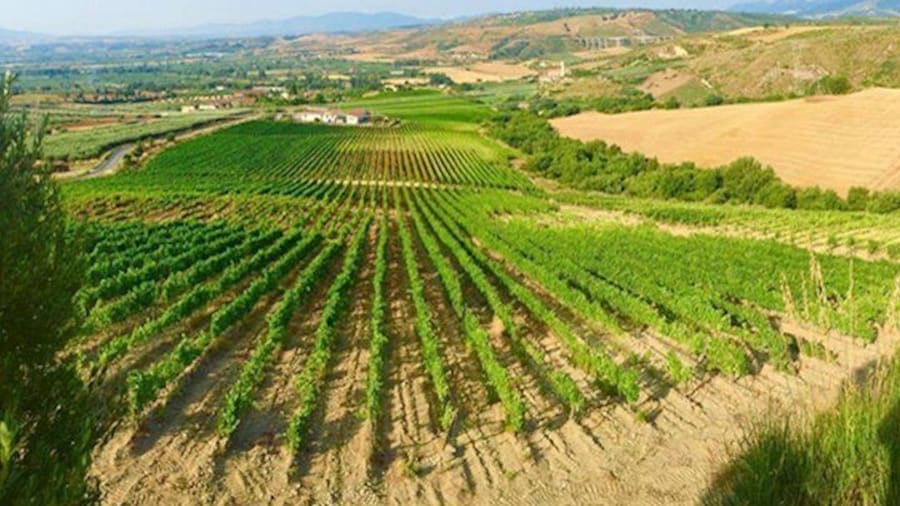A group of Albanian refugees founded Civita in 1471, seeking refuge from encroaching Ottoman power in the safety of high mountains across the sea in Italy. An earlier town had been destroyed by an earthquake and they set out to create a lively enclave of their culture, now known as Arbëresh. Visit for a new perspective on Italian and Albanian culture and to explore the stunning beauty of Pollino National Park.
Learn about Arbëresh culture at the Arbëresh Ethnographic Museum of Culture, with exhibits about traditional dress, crafts and the local Albanian dialect. Attend a Mass conducted in Albanian in the Orthodox churches, particularly Santa Maria Assunta, whose Eastern orientation and distinctive Byzantine mosaics set it apart from most other Italian churches. Walk around the town on the so-called Route of Chimneys, looking for smokestacks decorated with ancient stone carving.
Culture and nature combine at Il Ponte del Diavolo, a mysterious bridge spanning the Raganello River. Ride in a canoe or raft on the water, as it winds through the chasms and gorges of the park. Climb to the summits of the nearby Pollino Mountains, whose peaks provide views almost all the way to the sea.
Nestled in the middle of Pollino National Park, Civita is nonetheless relatively easy to access. Bus services run from Sibari, 30 minutes away, and more often from Cosenza, the provincial capital, 1 hour away. Train stations in each of those towns have connections to other regions. Drive from Naples in just under 3 hours or from Bari in 2.5 hours. The closest airport is in Lamezia Terme, 1.5 hours away by car. More connections are available from the other two cities. Civita itself is small enough to be best explored on foot. Rent a car for exploring the surrounding area.
On special feast days, watch for the splendid silk and gold costumes worn by the town’s women, which evoke perfectly Civita’s position between East and West.
